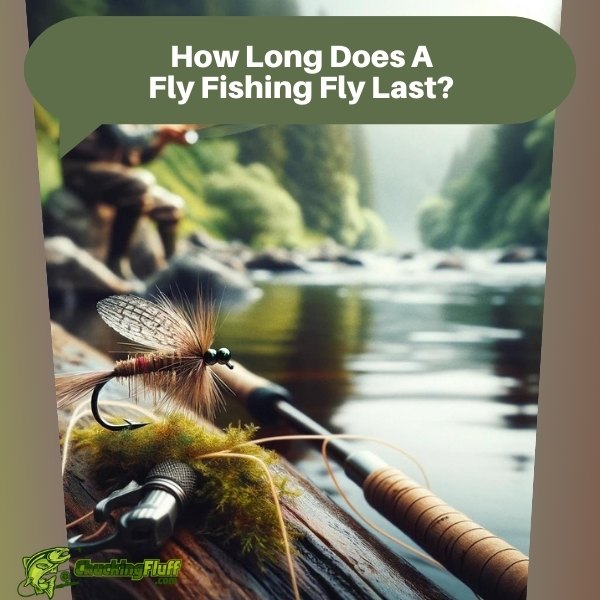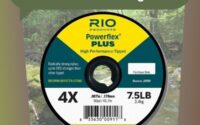| Disclosure: Just to be open and honest the buttons and links you click on in the website will in most cases take you to another website where you can purchase the products I am reviewing. As an Amazon Associate I earn from qualifying purchases. |
How Long Does A Fly Fishing Fly Last?

Fly fishing is not just a hobby; it’s an art form, a dance with nature’s rhythm, where the angler and the environment become one. Central to this dance are the flies – delicate, intricate creations designed to deceive the elusive trout beneath the glistening surface. But how long does a fly fishing fly last? Let’s delve into the ethereal lifespan of these tiny temptations that flicker and fade like whispers in the wind.
Quick Post Navigation
- The Lifespan of a Fly Fishing Fly
- Material Quality and Durability
- Frequency of Usage
- Effects of Fishing Conditions
- Signs of Wear and Tear
- Extending the Lifespan of Fly Fishing Flies
- Emotional Connection to Flies
- The Artistry of Fly Tying
- Environmental Considerations
- Conclusion
- FAQs
- “Check out some of our other Buying Guides”
The Lifespan of a Fly Fishing Fly
When we speak of the lifespan of a fly fishing fly, we enter a realm where time is fluid, and durability is subjective. Numerous factors influence how long a fly will last, from the quality of materials to the frequency of use and the harshness of fishing conditions. It’s a delicate balance between craftsmanship and chaos, where even the sturdiest of flies can succumb to the relentless pull of the river.
Material Quality and Durability
At the heart of every fly lies its essence – the materials that give it life and purpose. From the shimmering fibers of synthetic threads to the natural allure of feathers and fur, each component plays a role in determining the fly’s durability. Some materials, like sturdy synthetic fibers, may withstand the test of time better than delicate feathers, while others, like peacock herl, age with a graceful patina, enhancing their allure to discerning trout.
Frequency of Usage
Like a beloved song played on repeat, a fly’s lifespan is often dictated by how frequently it dances upon the water’s surface. With each cast and retrieve, the fly faces the wear and tear of the elements – the relentless tug of the current, the sharp teeth of hungry fish, and the unforgiving grasp of underwater debris. Yet, with proper care and mindful attention, even the most battered fly can rise from the depths to tempt another day.
Effects of Fishing Conditions
The whims of Mother Nature can be both a blessing and a curse for the fly angler. The pristine waters of a mountain stream may be gentle on delicate dry flies, while the tumultuous currents of a windswept river test the mettle of even the heartiest nymph. Water temperature, weather patterns, and seasonal fluctuations all play a role in shaping the lifespan of a fly, reminding us of nature’s capricious hand.
Signs of Wear and Tear
As with all things in life, nothing lasts forever, and even the most resilient fly will eventually show signs of age. Tiny tears in delicate wings, worn-out hackles, and faded colors serve as reminders of the fly’s journey through time and water. It is in these imperfections that we find beauty, for they tell the story of battles won and lost beneath the surface.
Extending the Lifespan of Fly Fishing Flies
While we cannot halt the march of time, we can take steps to prolong the life of our cherished flies. Proper storage, regular inspections, and timely repairs can breathe new life into even the most weathered of creations, allowing them to continue their dance upon the water for seasons to come.
Emotional Connection to Flies
Beyond their functional purpose, flies often hold a deeper significance for the angler – a connection forged through shared experiences and cherished memories. Whether it’s the fly that landed the biggest catch of the season or the one passed down through generations, each fly carries with it a piece of our angling soul, making its eventual demise all the more poignant.
The Artistry of Fly Tying
To tie a fly is to weave a tale – a story of color, texture, and form that captivates both angler and fish alike. Each knot tied and feather placed is a testament to the artisan’s skill and creativity, transforming humble materials into objects of desire that dance upon the water’s surface with ethereal grace.
Environmental Considerations
Yet, amid the beauty of fly fishing lies a sobering truth – the environmental impact of discarded flies. As anglers, it is our responsibility to tread lightly upon the waters we love, minimizing our footprint and disposing of old flies with care. Whether through biodegradable materials or responsible recycling, we must strive to leave our rivers and streams as pristine as we found them.
Conclusion
In the ephemeral world of fly fishing, the lifespan of a fly is but a fleeting moment in time – a delicate balance between artistry and impermanence. Yet, within that fleeting moment lies a world of beauty, adventure, and untold stories waiting to be discovered beneath the surface.
FAQs
Q) How often should I replace my fly fishing flies?
A) The frequency of fly replacement depends on various factors such as material quality, usage frequency, and fishing conditions. It’s essential to inspect your flies regularly and replace them when signs of wear and tear become apparent.
Q) Can I reuse damaged flies?
A) With proper care and maintenance, some damaged flies can be repaired and reused. However, it’s crucial to assess the extent of damage and ensure that the fly remains structurally sound before casting it again.
Q) Are there any environmentally friendly fly options?
A) Yes, there are environmentally friendly fly options available, including flies tied with biodegradable materials or those designed for easy recycling. Anglers can also minimize environmental impact by practicing responsible fly disposal.
Q) What should I do with old or worn-out flies?
A) Old or worn-out flies can be disposed of responsibly by either recycling them through designated programs or safely discarding them in waste bins. Avoid leaving old flies on riverbanks or in the water, as they can harm wildlife and pollute the environment.
Q) Is fly tying difficult to learn?
A) While fly tying requires patience and practice, it is a skill that can be learned by anglers of all levels. There are numerous resources available, including books, online tutorials, and workshops, to help beginners master the art of fly tying.



